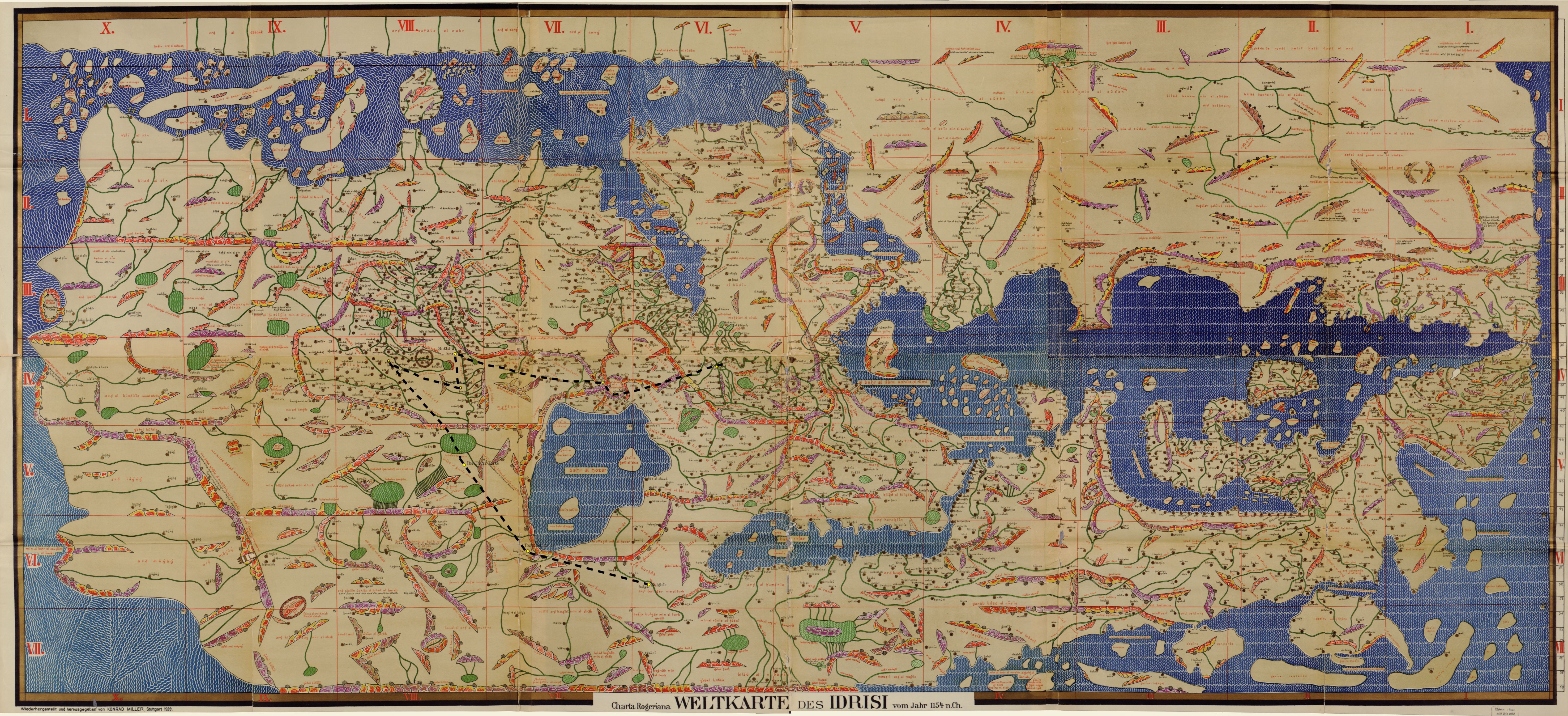Though the Tabula Rogerianais incredibly accurate for the time period, mapping ibn Fadlan’s journey onto it has significantly altered the visual representation of his journey. On the modern map, ibn Fadlan’s path takes him much further North that it does East. His journey takes an abrupt turn at Bukhara where the main direction of travel transition from East to North. In the medieval map, however, ibn Fadlan’s journey takes him farther East than it does North, completely altering the perspective of the viewer as to which direction was more applicable. On the medieval map, ibn Fadlan’s travels are more aptly described as his travels East, whereas on the modern map, he mostly traveled North.
As such, in the medieval map, the Caspian Sea, or bahr al hozaras it is labeled on the Tabula Rogeriana, appears to be a significantly more relevant landmark for ibn Fadlan as his journey appears to more closely circumvent the body of water. Ibn Fadlan appears far closer to the Caspian Sea at the Northern most point of his travels, having passed more or less around the circumference of the Caspian Sea. In the modern map, however, the Caspian Sea has no impact on his actual path and is much further West and South of his journey than it appears in the medieval map.
Finally, the proper South-up orientation of the Tabula Rogerianadepicts ibn Fadlan’s travels as going down around the Caspian Sea instead of up into the treacherous mountains and rivers of what is now called Russia, relatively close to Moscow. Not only does this shift the visualization of his journey, but the end of the Northern side of the medieval map cuts off the top of that northern Eurasian landmass, about halfway through what is today’s Russia. Ibn Fadlan’s final destination, Bulghar, is incredibly close to this northern edge of the map, making it appear as though he traveled nearly to the most northern, or bottom, edge of the world. This greatly contrasts with the modern map, which reveals that he made it just about half way through Russia at the western edge, far from the Barents Sea. As such, ibn Fadlan’s journey appears to take him to the edge of the known world on the Tabula Rogeriana, while on the modern map, his travels take him significantly north, but well within the confines of the Eurasian landmass.
